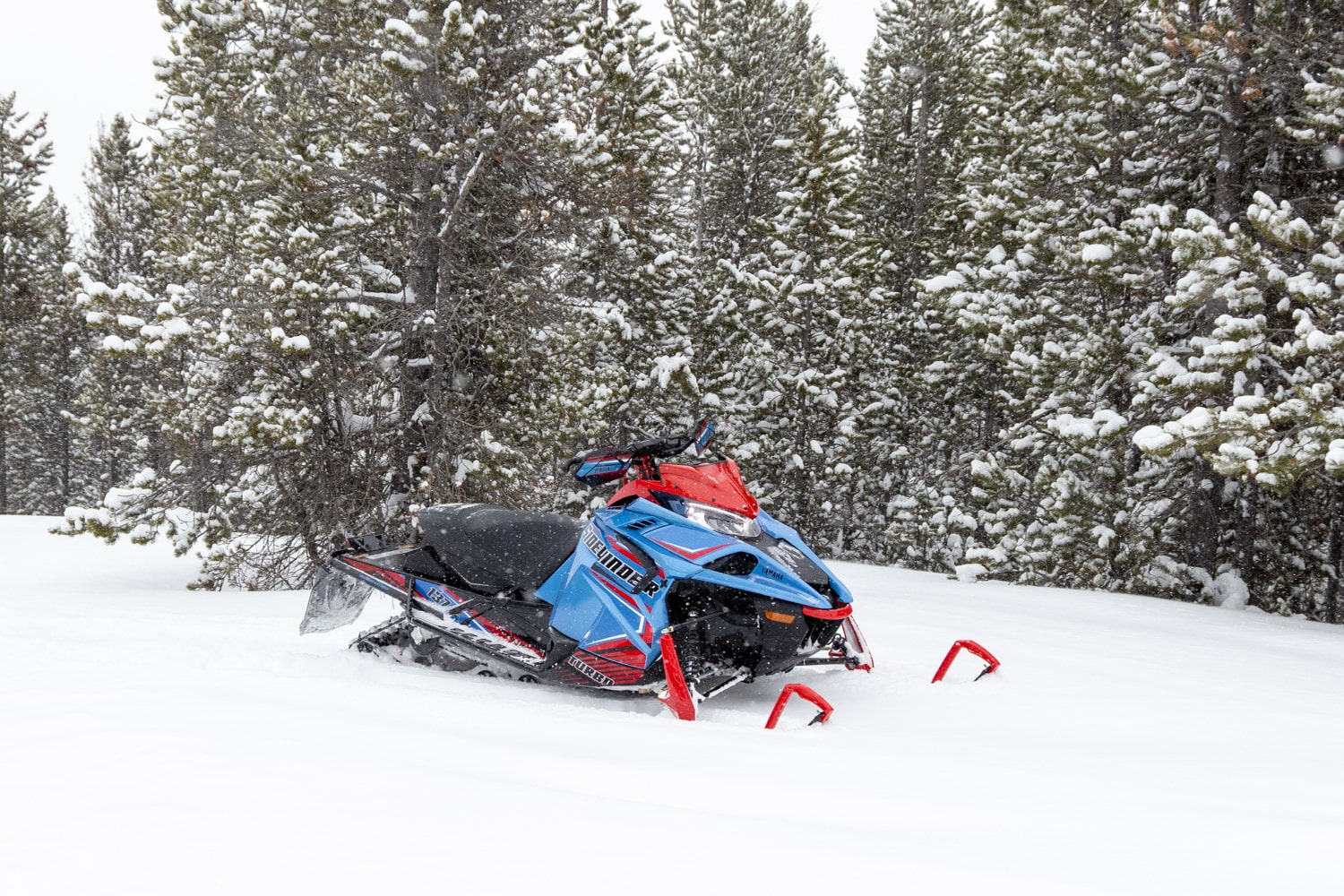The journalistic world is hungry for news, we always want more, and that’s understandable. The vast majority of our readers want to read about the new car for 2024, the new suspension, and so on. But for many, what matters is to have a very reliable snowmobile that has proven itself. You can’t blame the Japanese manufacturer for this, as they’ve been banking on this for years.
Yamaha has been a forerunner in the world of high-performance four-stroke engines since 2003, and continues to exploit this niche to great effect. No one can question the reliability of the Genesis 998 turbocharged engine. It continues to top the podium for power, and certainly with a similar ranking for reliability. I still remember when the very first RX-1, with its 1000cc four-stroke engine was introduced in 2002-2003, it was a revolution! More than 20 years ago, some manufacturers had already used four-stroke engines. But it was never with a high performance vision. Today, this type of engine is slowly becoming a standard in the industry.
L-TX SE
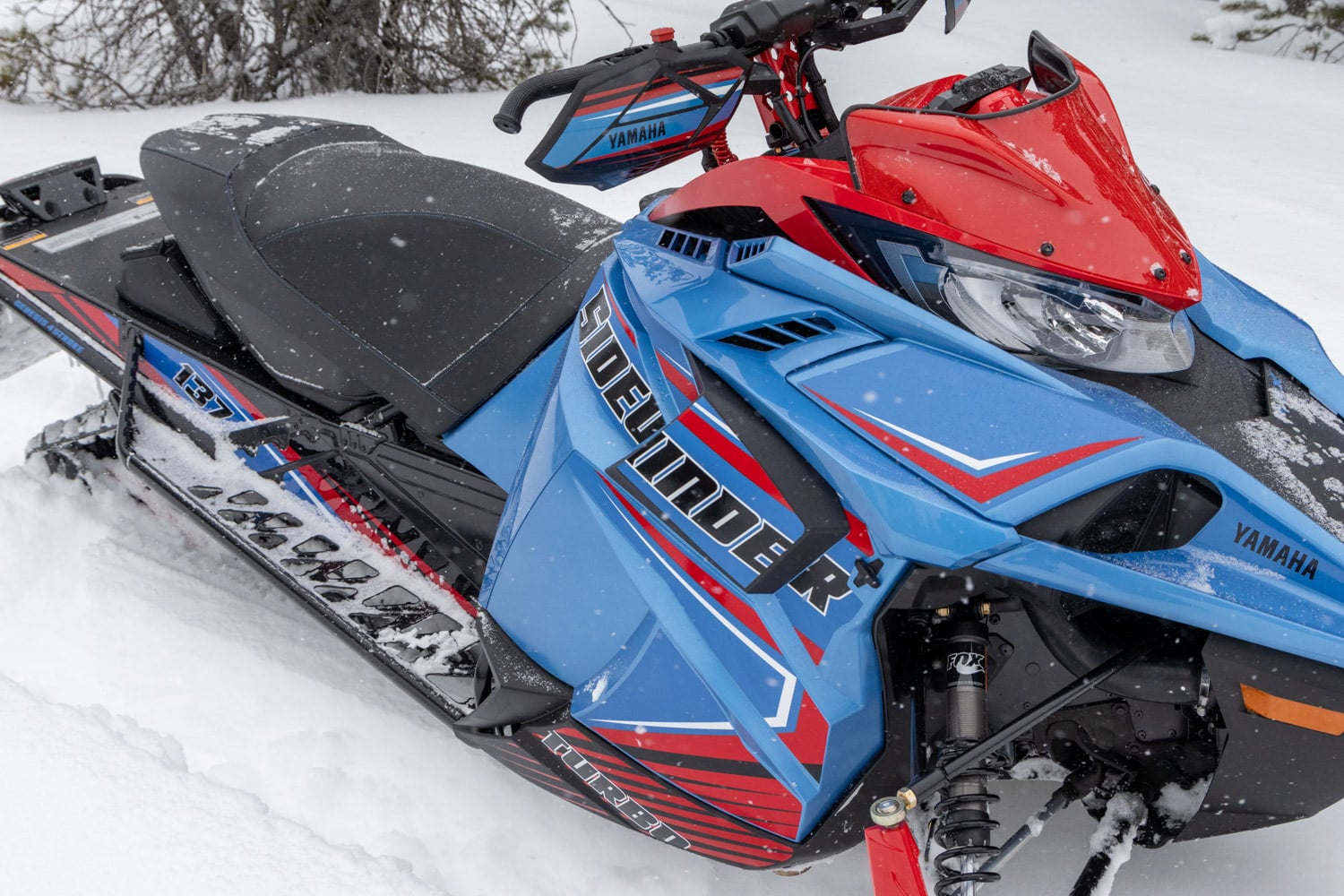
Although this model has been around for several years, and we’ve talked about it several times, it remains one of the most popular among Quebec enthusiasts. What characterizes the L-TX SE versions is of course the trail aspect, allowing for long rides. The independent double Delta front suspension is paired with Strike single-keel skis, while the SR 137 coupled rear suspension keeps the skis on the ground at all times. Ground contact is provided by a 137-inch Ripsaw II track with a 1.25-inch heel.
998 cm3 turbocharged
We always feel like we’re repeating ourselves, but this engine is truly one of the best ever produced by a manufacturer‚Ķ It offers reliability, smoothness and power, combined with very respectable fuel economy. This turbocharged inline three-cylinder engine produces over 200 horsepower. Engineers thought of several small points during the development of this engine, in order to ensure a constant and well-balanced power. The turbocharger is equipped with extremely heat-resistant ceramic ball bearings. This allows it to cope with speeds in excess of 200,000 rpm. Nine sensors feed the control unit to ensure smooth and maximum operation. Like all turbocharged engines, there is a waste gate that regulates the pressure supplied to the engine.
This is controlled by a solenoid that opens the valve when maximum pressure is reached in the intake system. Another essential point is the intercooler. The intercooler is essential to maintain constant and maximum power. The compressed air heats up, which reduces the power of the explosion because the hot air contains less gasoline vapors. To counter this phenomenon, the air is cooled as it passes through the intercooler. This maximizes its efficiency by increasing the air/fuel ratio in the combustion chamber. The result is a more constant and higher power output.
Suspension
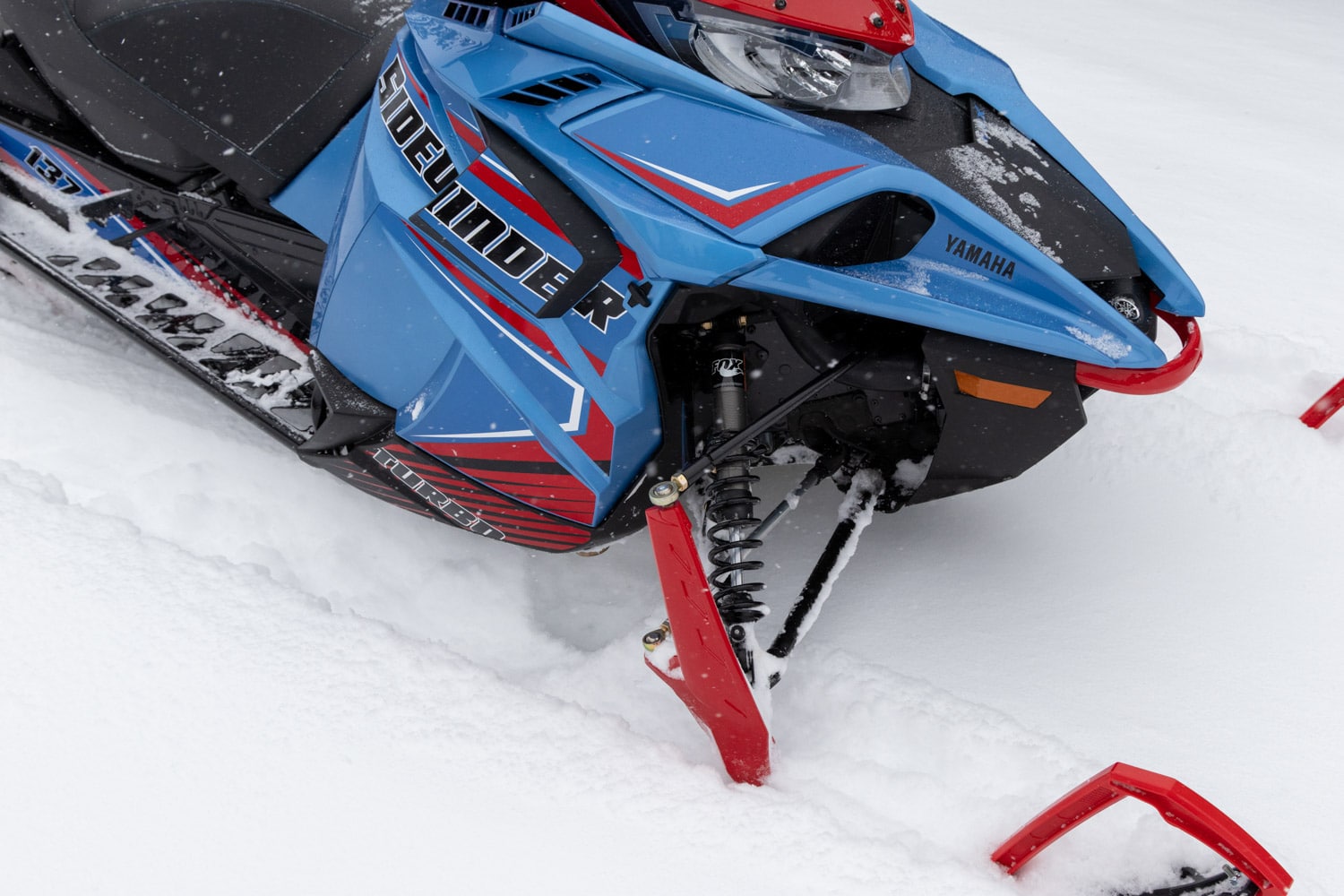
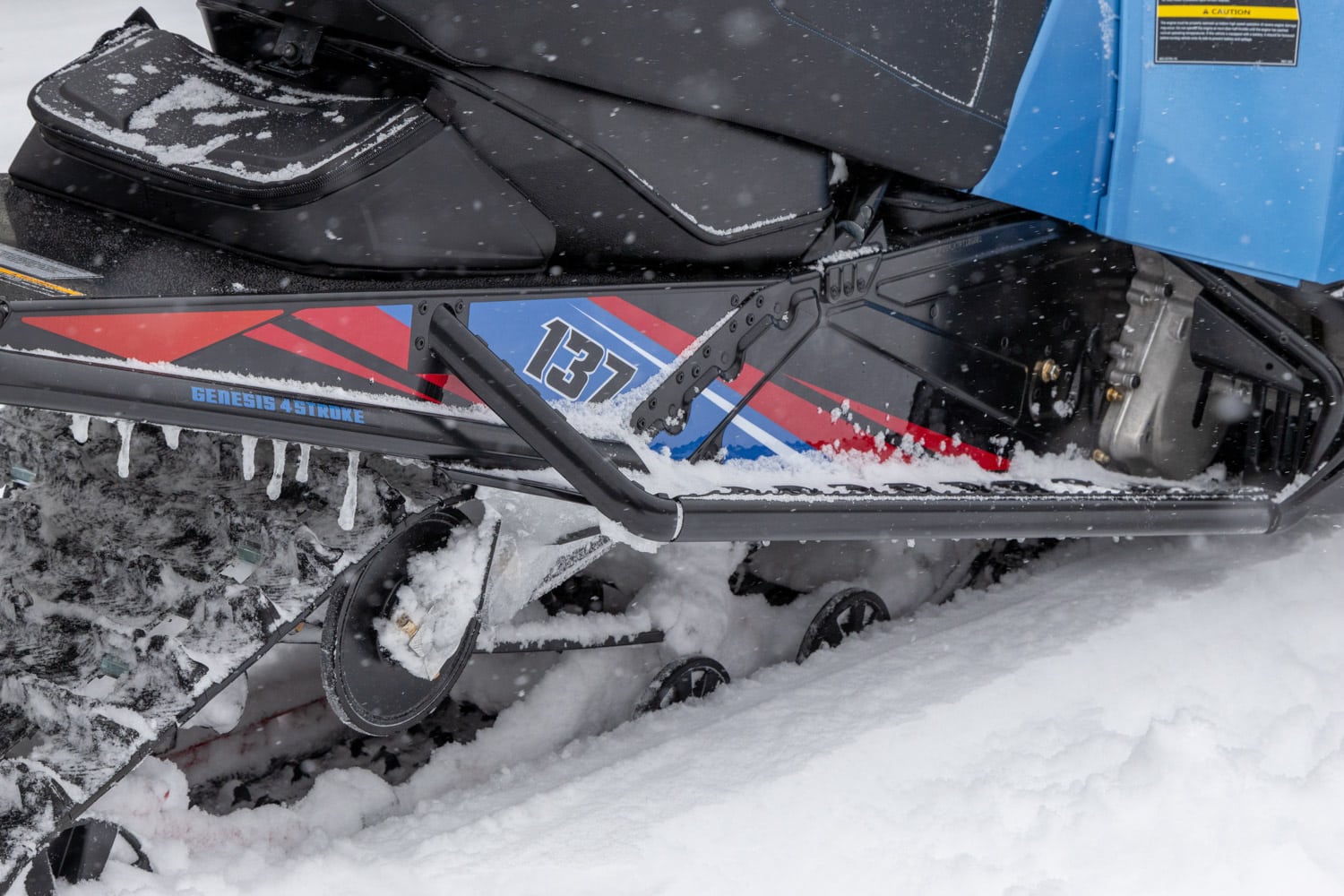
As for the suspension, the SE version is known to be a more trail-oriented version, with good quality shocks. However, if you’re the type that likes to push through bumps, the LE version will have different shocks that will serve you better. Our test version is equipped with FOX 1.5 ZERO RC shocks up front. In the middle, there is a 1.5-inch aluminum gas monotube. Finally, at the rear, we finish with a larger 2-inch monotube. As in previous years, we’re keeping the suspensions from the Arctic Cat partnership. These are the double Delta independent in the front and the SR 137 in the rear.
On the trail
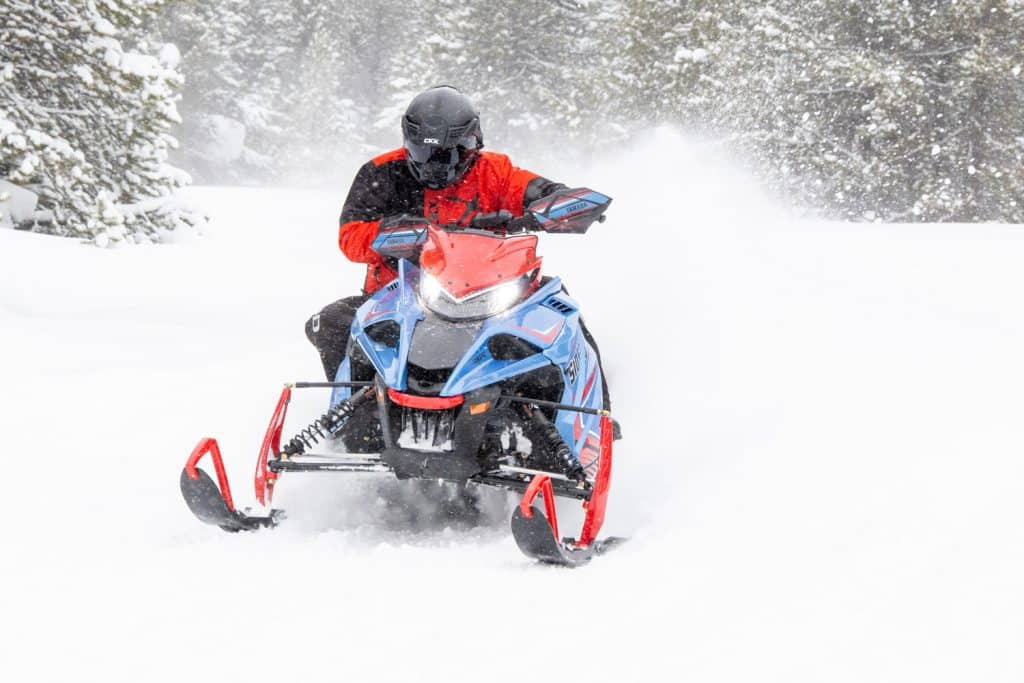
If we start with the points we would like to improve, two things quickly come to mind. They are the wind protection and the heaviness of the ride. The L-TX SE version comes with the small race style windshield. Although it gives a more aggressive look, you’ll have to consider investing a few bucks on this side for better wind protection.
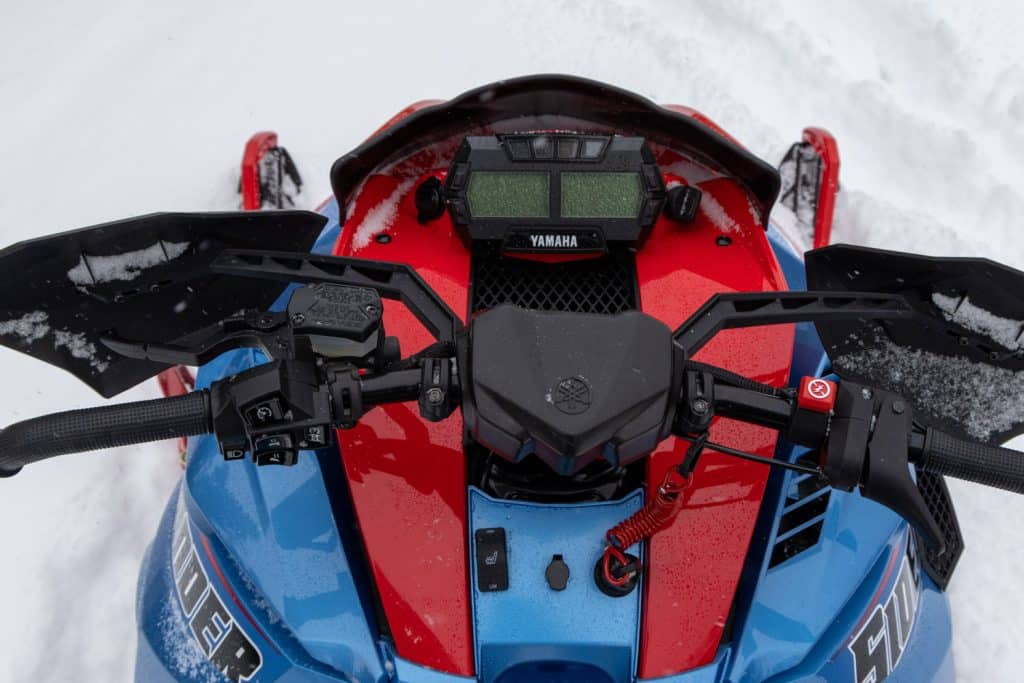
Another essential element: the handguards. I had the bad experience of getting a piece of ice directly on my fingers during our tests. This would not have happened with handguards (other model than the one shown). The calorific aspect by the protection against the wind is also to be considered with handguards. This is not negligible… Another major point that comes to mind is the heaviness of the ride. While this is acceptable, there is still a fair amount of arm and shoulder resistance on the more winding trails. It should be mentioned that after trying a version with power steering, we become more critical.
The good things
On the positive side, the turbocharged 998 engine is certainly a marvel of the industry, with its smoothness, power and linearity. Right off the bat, it’s as pleasant to the ear as ever, a purr that hints at power without aggression. The slight whistle of the turbo puts a smile on our faces. And if we dwell on the vibration, you may look for a long time, this mill is remarkably smooth. Indeed, it has a perfect balance, which provides a smoothness worthy of a Japanese engine. A small drawback for the clutch, we still find in 2024 the small noise when the engine turns at idle‚Ķ What do you want, nothing is perfect.
Its behavior on the trail is without reproach, the Stryke skis remain welded to the ground regardless of the conditions and they deliver the goods. Personally, I would like a more aggressive ski, but it all depends on your riding style. Since the skis are equipped with pins and single rails, you’ll have to deal with a bit of swaying on hard terrain.
Conclusion
The L-TX SE is comfortable on slightly rough trails, ideal for long days. That’s its primary purpose. The LE version will be a better choice for those who push the limits in the bumps.
If you choose the Sidewinder L-TX SE 2024, you won’t be disappointed! Performance and reliability, you won’t get tired of it.

